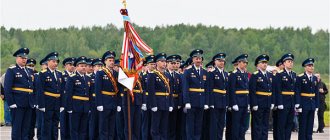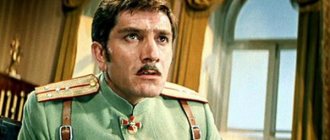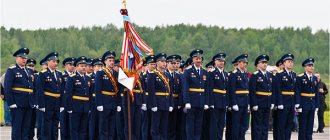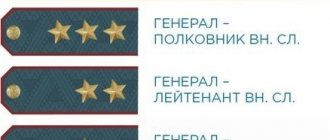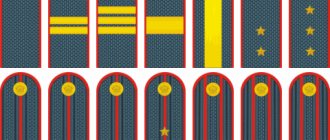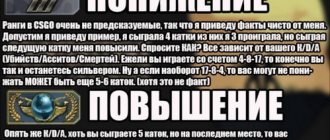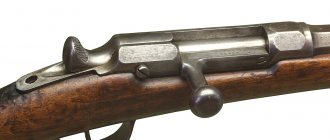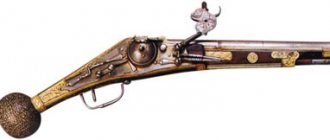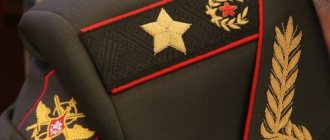When did the ranks of military pilots appear?
Military aviation, as a branch of the military in Russia, dates back a little over 100 years. It is closely connected with such “technical” branches of the military as the navy and engineering troops, from among the officers and non-commissioned officers, of whom the first detachment of military pilots was formed, numbering 12 people.
Despite the fact that the first detachment of military pilots was formed in 1909, the Highest Decree of the EIV Nicholas II on the formation of aeronautical units was issued only the next year, 1910. Military aviation became an independent branch of the military in 1912. In the period before the registration of aviation as an independent type of weapon, military ranks were assigned to the departments in which they began military service. Accordingly, their titles remained the same. The vast majority of the first military pilots had the ranks: captain-lieutenant of the EIV fleet and captain of the engineering troops.
At the beginning of the 20th century, there was a popular idea that airspace represented a “fifth” ocean - filled with ether. This gave rise to the idea of balloonists as conquerors of the “ocean of air.” This entailed the borrowing of some concepts from naval terminology. Unfortunately, this did not affect military ranks. Military pilots received the same ranks as those serving in other branches of the military, unlike military sailors, who have their own system of military ranks.
Demobilization and parade uniform of the Airborne Forces
The uniform in which a paratrooper goes on demobilization is the dress uniform. It is quite different from the usual field clothing and, in general, from all other clothing of other troops. The reconnaissance of the Airborne Forces, which has already completed its military service, can be seen from afar; one can really be proud of this form. It is considered the most beautiful and fashionable among other military uniforms.
Reconnaissance on demobilization looks something like this: a brave, handsome man in a vest with blue stripes and a blue beret, a tunic with blue stripes, with a lot of all possible decorations.
On May 9, on Victory Day this year, the soldiers and officers of the Airborne Forces were presented in new field equipment; their dignified appearance once again emphasized how the leadership cares about the health and comfort of its soldiers. The preparation of real future intelligence must take place in a wide variety of climatic conditions, so clothing must always meet these basic requirements.
Air Force ranks from 1918 to 1924
Most of the history of domestic military aviation occurred in the Soviet period. On November 10, 1917, by decision of the All-Russian Central Executive Committee and the Council of People's Commissars, approved by the Council of People's Commissars of the RSFSR, the army and navy were abolished.
However, already in January 1918, the head of the 18th division I.P. Uborevich, introduced insignia for command personnel in the units subordinate to him, which made it possible to determine the seniority of military leaders in relation to the personnel. In 1919, after the approval of a single military uniform for all personnel of the Red Army, insignia were established. However, they were not military ranks.
In the period from 1918 to 1924, the ranks of all military pilots were “voenlet” - short for “military pilot”, without indicating seniority (rank).
Senior officers
Senior officers begin with the rank of major, to which, after several years of good service, a senior lieutenant passes. One fact is curious here: some ranks in the naval forces, despite the fact that they differ in seniority, can bear the same name. For example, a captain of the third rank is equivalent to a captain of the ground forces, but a captain of the first rank is equivalent to a ground colonel.
To determine what rank a particular serviceman bears, it is now necessary to simply look at his shoulder straps. Moreover, such shoulder insignia are worn not only by members of the Russian army, but also by citizens who work in law enforcement agencies. For example, the prosecutor's office or the police use the same parameters when placing stars on shoulder straps, the same distance between them.
At the same time, in order not to get confused, how many stars indicate a particular rank, their number in the army and law enforcement agencies for the same ranks is the same. The colonel's stars on his shoulder straps are currently present in the same number among the military as among law enforcement officers.
Military knowledge. Reform of 1924
Introduced personal military ranks into the troops. Thus, the rank of “captain” appeared in the air force, which was assigned to aircraft commanders. With the exception of the rank of “captain,” which did not exist in the ground forces, the remaining military “ranks and positions” corresponded to the combined arms ones.
Taking into account the specifics of the air force, the ranks of military pilots were:
- Crew commander (captain);
- Flight commander;
- Deputy Komeska (deputy squadron commander);
- Komesk (squadron commander);
- Deputy com. separate squadron;
- Com. separate squadron;
- Deputy Regimental Commander;
- Regimental Commander;
- Deputy Divisional Commander;
- Divisional Commander;
- head of VVAUL (VVAUSH);
- head of the pulp and paper department;
- deputy commander of the aviation corps;
- com. aviation corps;
- deputy com. air army;
- Air Force Commander;
- Deputy Commander of the VTA, DA (long-range aviation);
- Commander of the VTA, YES;
- Deputy Commander of the Air Force;
- Air Commander of the High Command;
It is clear that such a complex system of ranks and positions created inconvenience in handling between military personnel, and for the rank and file, who during this period rarely even had a primary education, it was completely incomprehensible and difficult to remember.
Despite this, the system of ranks and positions was preserved until 1935 - the next reform of the Red Army, during which the military ranks (ranks) that existed before the 1917 revolution were restored.
In 1937, the first officer military rank was introduced for cadets who graduated from military flight schools - “junior lieutenant of aviation”. And in 1940 - the title of “General of Aviation”.
A characteristic feature of inter-military circulation during this period was that a military rank had to have a prefix indicating the branch of the military - “aviation”. That is, when addressing the serviceman, he had to say:
- Comrade junior lieutenant of aviation;
- Comrade aviation major, etc.
Finally, the ranks in the air force were streamlined by 1943, when the highest military rank of “air marshal” was established, and subsequently, in 1944, the rank of “chief marshal of air”.
The title of “Air Chief Marshal” was awarded to 7 pilots, more than in any other branch of the military. The first, in March 1944, was assigned to the commander of the Red Army aviation A.A. Novikov and, in August 1944, the commander of the ADD (long-range aviation - the prototype of strategic aviation) A.E. Golovanov.
N.B ! A.E. Golovanov is the only military pilot who began his service immediately with the rank of lieutenant colonel, when, in February 1941, he was appointed to the post of commander of the 212th long-range bomber aviation regiment. Before this, he did not have a military rank (he was a chief pilot of civil aviation). By August 1944, at the age of 40, he was awarded the title of “Chief Marshal” of the military branch. That is, in a little more than 3 years (41 months), he passed 7 levels of senior and highest military ranks.
Changes
In connection with the constant increase in the personnel of the Soviet Armed Forces, by order of the People's Commissariat of Defense, military branches and branches were formed as part of artillery, aviation, air defense troops, communications troops, and engineering troops. and armored corps. The main combat support units up to the command level were created. This process was characterized by the need for highly qualified command personnel with a suitable rank structure. The Soviet state and party administration responded to these challenges by introducing additional higher ranks, as well as the reintroduction of traditional Russian insignia.
A new rank group was introduced at the OF-9 level (equivalent to a squad general in the Wehrmacht
and the Imperial Russian Army), called squad marshal or squad chief marshal.
In January 1943, the ranks of air marshal, artillery marshal and armored corps marshal appeared. In October 1943, he was followed by the addition of Marshal of the additional ranks of Signal Corps, Marshal of the Engineering Troops and the equivalent Chief Marshal of branch ranks.
Ranks of military pilots (military technical personnel of military aviation) 1935-1939
No less difficult was communication between non-flying (technical) personnel engaged in servicing aviation equipment, aviation weapons and airfield services. For military personnel who are structurally part of the Air Force, but not related to the flight crew, their own ranks were established (in ascending order):
- Jr. military technician;
- Military technician 2nd rank;
- Military technician 1st rank;
- Military engineer 3rd rank;
- Military engineer 2nd rank;
- Military engineer 1st rank;
- Brigengineer;
- Development Engineer;
- Coring Engineer;
- Armengineer.
The prefix “aviation” was required.
For example, a military engineer of the 2nd rank, corresponding to the military rank of “major,” should have been addressed:
— Comrade aviation military engineer, 2nd rank, etc.
Caps
The pilot's cap consists of several parts - a durable bottom, a rounded crown, a high band and a shiny black visor. The first 3 elements have a dark blue color, along the edges of the bottom and along the top of the band there are bluish edgings. A dark blue grosgrain ribbon must be worn on the band. A special gold-colored braided cord is fastened above the visor with 2 small buttons.
- A cap with a removable cover is distinguished by a special crown, which is covered with a snow-white durable lining and over which a removable pure white cover made of cotton fabric is pulled.
- The winter cap consists of a band of black fur, a cap, as well as a crown, a visor and a special nape cap. Most of the elements in this headdress are made of black leather. The backrest, like the headphones, can be lowered and fastened neatly under the pilot’s chin at any time if necessary.
In the very center of the band, the flight cap is decorated with a special cockade. This is a stylized image of the aviation emblem. At the same time, modern cockades come in a variety of varieties (embroidered emblems are most valued in our country). On the crown, above the aviation emblem, a small aviation emblem can sometimes be placed - in the form of open wings that intersect with a propeller with two blades. The asterisk located above these wings eloquently speaks about the Soviet history of the cap of modern aviators.
Above the visor, the product is always complemented by a small braided cord - golden color for officers and a very simple leather strap for the rest of the flight personnel. Also on the canopy itself, along the outer edges, you can often notice the so-called oak trees (or they are also called “glide paths”), which depict a wreath of one-sized leaves.
All military pilots receive caps along with the uniform they are given, but not all of them are eager to wear what they were once given, even if it’s free. That is why many pilots sew their uniforms to order in special cap workshops - this was the case in Soviet times, and it remains so today.
Modern structure of military ranks in aviation
In 1957, another military reform was carried out, it mainly affected systemic changes in the army structure. It laid the preconditions for the emergence of a new type of troops - the Strategic Missile Forces, but did not affect the system of military ranks, which was finally formed by 1944. The only exception was the removal of the mandatory prefix “aviation” from military appeals to military pilots. From now on, all representatives of the Air Force should be called only by rank, without adding “aviation”.
In 1984, by Decree of the USSR PVS, the ranks “Marshal of Aviation” and “Chief Marshal of Aviation” were excluded from the system of ranks of military pilots. The exclusion of the rank of “marshal of the military branch” also affected other branches of the military. The last person to be awarded the title of “Chief Air Marshal” in 1991 (despite the exclusion of the title from the list) was E.I. Shaposhnikov. The title was awarded in connection with his appointment to the post of Minister of Defense of the USSR.
Currently, the Air Force is part of the military space forces (VKS). Military ranks fully correspond to the ranks of military personnel of the ground forces. The lowest rank in the Aerospace Forces is “private”, the highest is “army general”.
New form of airborne forces in Russia
Now let’s travel through 2014 together with Russian Defense Minister Sergei Shoigu. Not long ago he visited a legendary motorized rifle brigade, known since the Chechen war. In 2014, the soldiers of this unit were transferred to Ugra, and the new uniform acquired a new modern look, so now the military in such uniforms are not afraid of any frost. The new clothes were tested in extremely low temperatures, piercing and cold winds.
Sergei Shoigu paid a visit to present awards, the action took place in an open area, and the military had to march in front of the highest leadership of Russia. At first, the form was delivered as an experimental one, but at the end of 2014 it was approved in 9 versions.
The new form for 2014 can be combined in different ways:
- for cool weather it will be enough to wear a lined jacket,
- for windy conditions it is recommended to wear a jacket under the jacket,
- in rainy weather, airborne special forces can wear a fleece shirt with a waterproof overall.
During the active training phase or the airborne assault march, the Airborne Forces wear their usual uniform. During theoretical classes, fighters wear lighter office attire.
The uniform of the Russian Airborne Forces in 2014 went through a number of changes: the ears on the earflap hat became longer, easily overlap at the back and are fastened with Velcro, this is quite important and comfortable for the chin. The hat has a top flap that can, if necessary, turn into a sun visor. Outerwear has also undergone many changes, for example, a jacket can be disassembled into several elements. It has become a kind of construction set that can be transformed from an ordinary windbreaker to a warm pea coat.
The entire 2014 field uniform consists of 16 pieces that easily fit into a backpack. Depending on the time of year, the backpack can be light or heavy. In the new field footwear, felt boots were replaced by warm boots with inserts. A winter paratrooper vest has also been added, which does not restrict movement. A warm scarf and a comfortable balaclava were added to the whole set. Reconnaissance overalls are made of waterproof material.
Senior officers
The highest officer ranks include three general ranks: major general, lieutenant general, and colonel general. The stars embroidered on the fabric relief surface are 22 mm in diameter and are located in the middle of the shoulder strap, lengthwise. The number of stars on the shoulder straps: one, two and three - corresponding to the general ranks, listed in order.
Next comes the General of the Army - the diameter of the star is 40 mm, along with it is the lapel emblem of the Ground Forces (star in a wreath). The highest active rank is marshal. Shoulder insignia includes an embroidered forty-millimeter star with piping and the coat of arms of the Russian Federation (without the accepted heraldic shield).
The only marshal in modern Russian history is Igor Sergeev, who was awarded this title in 1997. The real Minister of Defense S. Shoigu holds the rank of army general.
Military and ship ranks: order of correlation
In the Navy, some ranks have different names.
Correspondence tables
| Non-officers | ||||||
| military ranks | ||||||
| private | corporal | Lance Sergeant | sergeant | staff Sergeant | foreman | warrant officer/senior warrant officer |
| ship ranks | ||||||
| sailor | senior sailor | foreman 2nd article | foreman 1st class | chief petty officer | chief petty officer | midshipman/ senior midshipman |
| Senior officers | ||
| Ground Forces and Aerospace Forces | ||
| major | lieutenant colonel | Colonel |
| Navy | ||
| captain 3rd rank | captain 2nd rank | captain 1st rank |
| Highest military ranks | |||
| Military ranks | |||
| major general | lieutenant general | Colonel General | army General |
| Navy | |||
| rear admiral | vice admiral | admiral | fleet admiral |
The only difference in the names of the ranks of the junior officer corps is the rank of captain; in the navy it is called captain-lieutenant.
